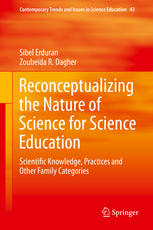

Most ebook files are in PDF format, so you can easily read them using various software such as Foxit Reader or directly on the Google Chrome browser.
Some ebook files are released by publishers in other formats such as .awz, .mobi, .epub, .fb2, etc. You may need to install specific software to read these formats on mobile/PC, such as Calibre.
Please read the tutorial at this link: https://ebookbell.com/faq
We offer FREE conversion to the popular formats you request; however, this may take some time. Therefore, right after payment, please email us, and we will try to provide the service as quickly as possible.
For some exceptional file formats or broken links (if any), please refrain from opening any disputes. Instead, email us first, and we will try to assist within a maximum of 6 hours.
EbookBell Team

0.0
0 reviewsPrompted by the ongoing debate among science educators over ‘nature of science’, and its importance in school and university curricula, this book is a clarion call for a broad re-conceptualizing of nature of science in science education. The authors draw on the ‘family resemblance’ approach popularized by Wittgenstein, defining science as a cognitive-epistemic and social-institutional system whose heterogeneous characteristics and influences should be more thoroughly reflected in science education. They seek wherever possible to clarify their developing thesis with visual tools that illustrate how their ideas can be practically applied in science education.
The volume’s holistic representation of science, which includes the aims and values, knowledge, practices, techniques, and methodological rules (as well as science’s social and institutional contexts), mirrors its core aim to synthesize perspectives from the fields of philosophy of science and science education. The authors believe that this more integrated conception of nature of science in science education is both innovative and beneficial. They discuss in detail the implications for curriculum content, pedagogy, and learning outcomes, deploy numerous real-life examples, and detail the links between their ideas and curriculum policy more generally.